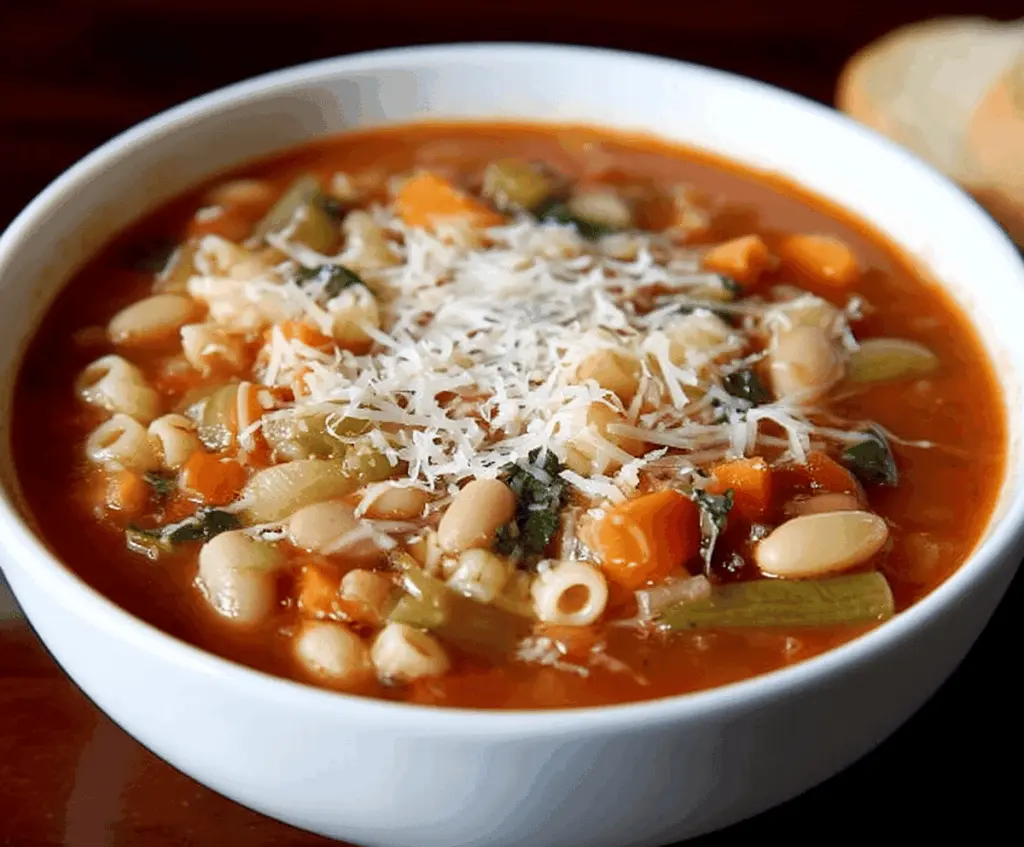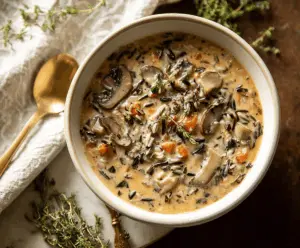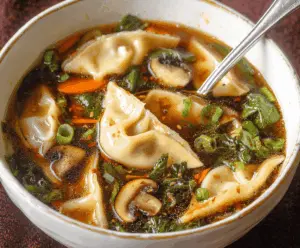Classic Minestrone Soup is like a big, warm hug in a bowl. It’s loaded with colorful veggies like tomatoes, carrots, zucchini, beans, and pasta, all swimming in a tasty tomato broth. This soup is both hearty and light, packed with wholesome ingredients that make it feel fresh and comforting at the same time.
I love making this soup because it’s so flexible — you can toss in whatever vegetables you have on hand, and it still tastes amazing. To me, the magic really happens when you let it simmer long enough for all the flavors to come together beautifully. It’s a great soup to make on a lazy day when you want something easy but satisfying.
When I serve minestrone, I like to sprinkle some grated Parmesan cheese on top and pair it with crusty bread for dunking. It’s the kind of meal that brings everyone to the table and makes you want to slow down and enjoy good company. After a bowl or two, you’ll see why classic minestrone is a favorite in so many kitchens!
Key Ingredients & Substitutions
Olive Oil: This is your base for sautéing. If you want a milder flavor, use light olive oil or vegetable oil. I usually stick to extra virgin for the best taste.
Vegetables: Onion, carrots, celery, tomato, zucchini, green beans, and optional potato create a balanced veggie mix. Swap zucchini or green beans for whatever seasonal veggies you have—like bell peppers or spinach.
Beans: Cannellini or white beans add heartiness. You can use kidney beans or chickpeas if you prefer. If using canned beans, rinse well to reduce salt and improve flavor.
Pasta: Small pasta shapes like ditalini or elbow macaroni work best here. If you’re gluten-free, try rice or smaller gluten-free pasta shapes, but add these closer to the end to avoid mushiness.
Broth: Vegetable broth is great for a vegetarian option. Chicken broth can be a substitute for more depth. Adjust salt if broth is salty.
How Do You Make Sure the Pasta Doesn’t Get Mushy in Minestrone?
A common challenge is overcooked pasta that turns mushy. To avoid this:
- Add pasta towards the end of cooking—about 8-10 minutes before soup is done.
- Keep the soup simmering gently after adding the pasta—too hard a boil can break the pasta up.
- If you expect leftovers, cook pasta separately and add it to portions when serving. This keeps pasta firm and fresh.
Also, stirring occasionally ensures pasta cooks evenly but don’t stir too much to avoid breaking it. This helps keep your minestrone’s texture just right!
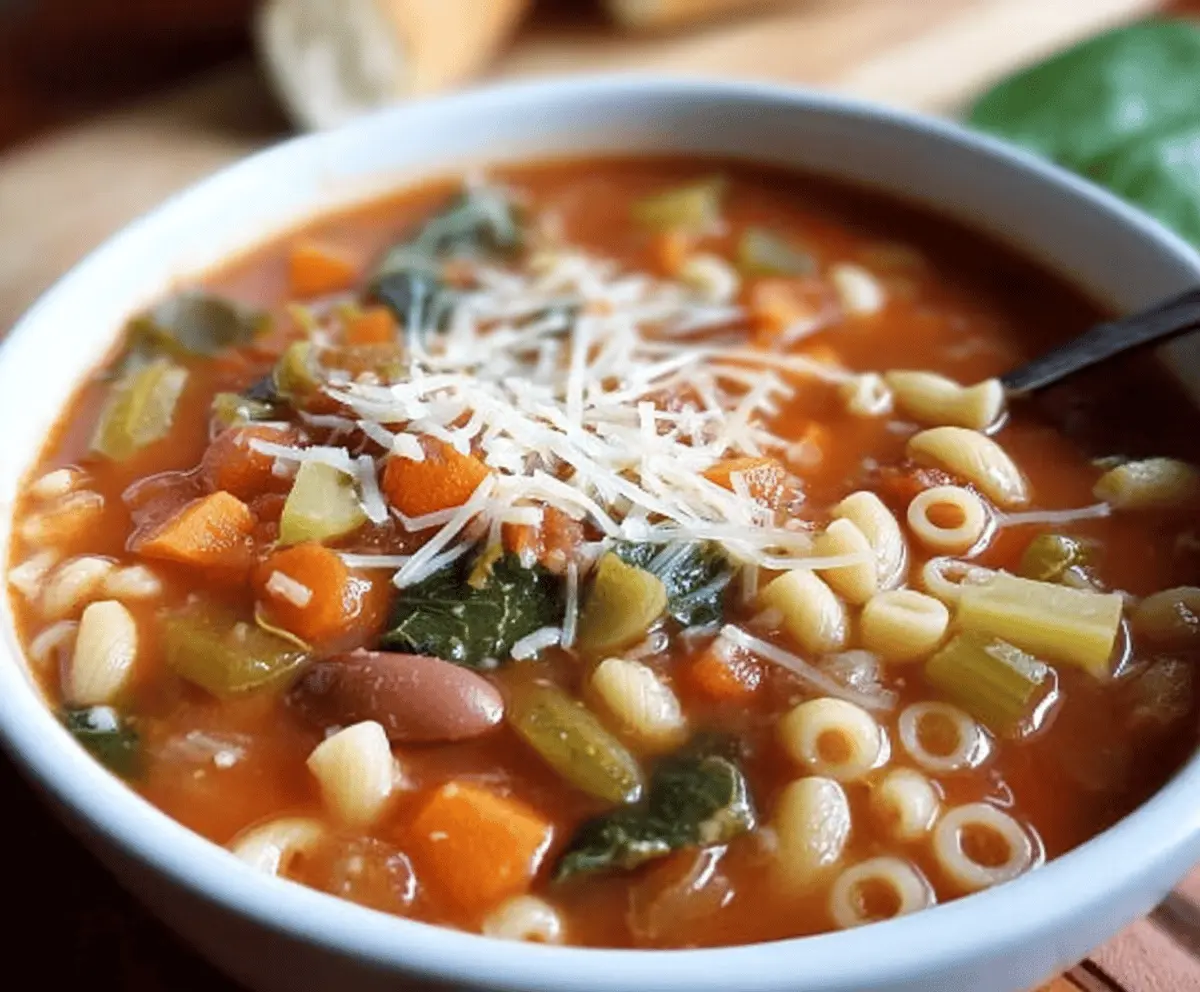
Equipment You’ll Need
- Large soup pot – I prefer a big pot to hold all the ingredients comfortably and help everything cook evenly.
- Cutting board and sharp knife – these make chopping vegetables quick and safe.
- Soup spoon or ladle – for serving the soup easily and neatly.
- Measuring spoons and cups – to keep your seasonings just right.
- Colander or strainer – helpful for rinsing beans and draining pasta if cooking separately.
Flavor Variations & Add-Ins
- Replace or add kale or spinach with Swiss chard for a different green twist—stir in just before serving so they keep their bright color.
- Use chickpeas or kidney beans instead of cannellini for more texture and flavor variation.
- Stir in cooked minced sausage, bacon bits, or pancetta for a meaty flavor boost.
- Add a pinch of red pepper flakes or smoked paprika to give the soup a touch of heat or smoky flavor.
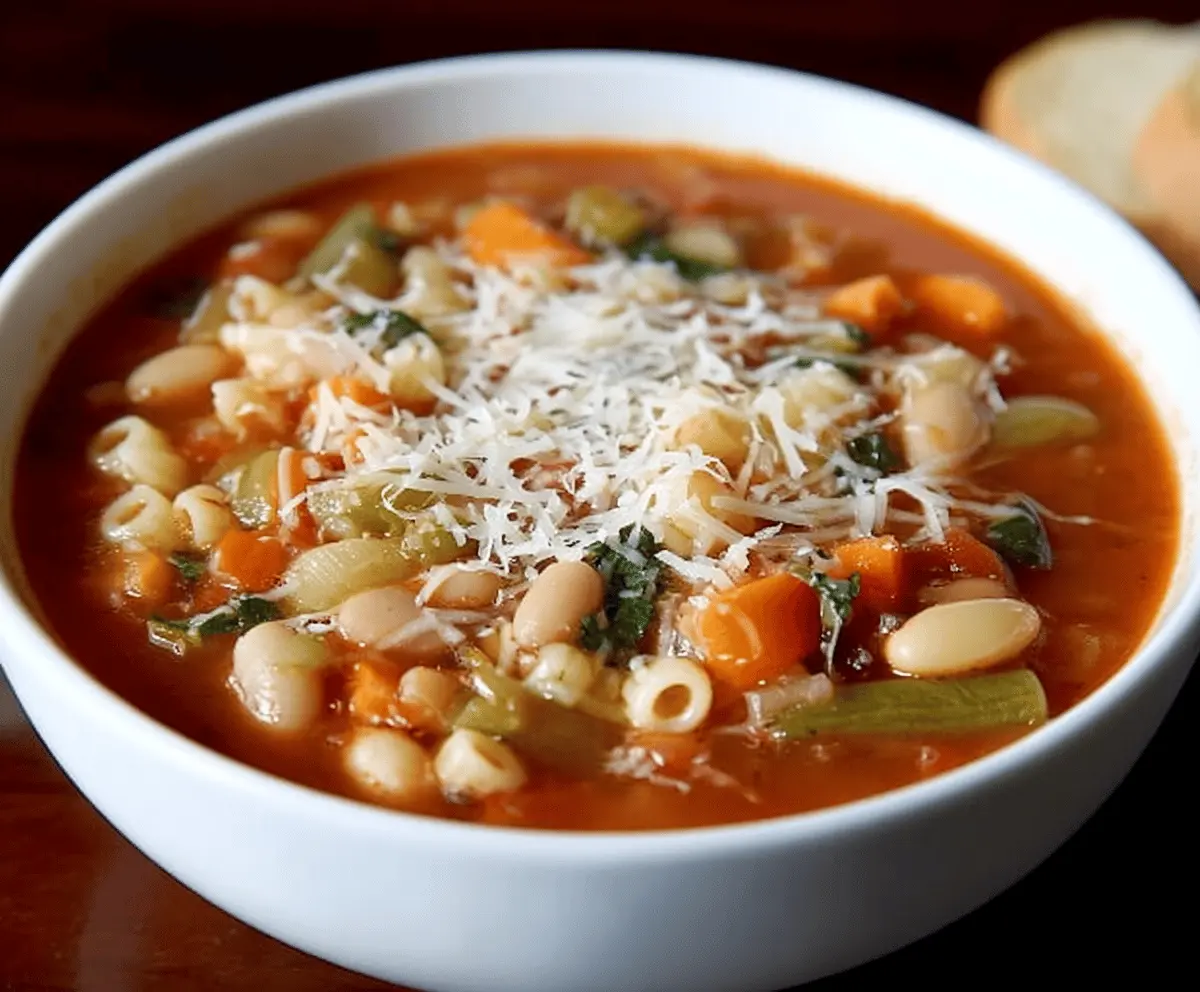
Classic Minestrone Soup
Ingredients You’ll Need:
- 2 tablespoons olive oil
- 1 medium onion, diced
- 2 cloves garlic, minced
- 2 medium carrots, diced
- 2 stalks celery, diced
- 1 medium zucchini, diced
- 1 medium potato, peeled and diced (optional)
- 1 cup green beans, chopped
- 1 can (14.5 oz) diced tomatoes
- 6 cups vegetable broth
- 1 can (15 oz) cannellini or white beans, drained and rinsed
- 1/2 cup small pasta (like ditalini or elbow macaroni)
- 1 teaspoon dried thyme
- 1 teaspoon dried oregano
- 1 bay leaf
- Salt and freshly ground black pepper, to taste
- 2 cups fresh spinach or kale, chopped
- Freshly grated Parmesan cheese, for garnish
- Fresh basil or parsley, chopped, for garnish
How Much Time Will You Need?
This soup takes around 45 minutes total. You’ll spend about 15 minutes prepping and sautéing the veggies, then simmer the soup for about 30 minutes to let all the flavors mingle and the veggies soften perfectly. It’s quick enough for a weeknight but special enough to enjoy anytime!
Step-by-Step Instructions:
1. Sauté the Veggies:
Heat olive oil in your large soup pot over medium heat. Add diced onion, carrots, and celery, and cook for 5 to 7 minutes until the veggies start to feel soft and smell amazing. Then stir in garlic and cook for another minute.
2. Add More Vegetables:
Mix in the zucchini, potato (if you’re using one), and green beans. Let these cook for about 5 minutes, stirring now and then so everything softens evenly.
3. Pour in Tomatoes and Broth:
Add the diced tomatoes with their juice, the vegetable broth, thyme, oregano, bay leaf, and a pinch of salt and black pepper. Bring the pot to a boil, then lower the heat to a gentle simmer. Let it cook uncovered for about 20 minutes until the vegetables feel tender.
4. Add Beans and Pasta:
Stir in your drained white beans and pasta. Let the soup cook for another 8 to 10 minutes until the pasta is just tender (al dente). Remember, you want a slight bite, not mush!
5. Finish with Greens and Season:
In the last few minutes, toss in the chopped spinach or kale and let it wilt. Remove the bay leaf and taste your soup. Add more salt and pepper if you want.
6. Serve and Enjoy:
Ladle the lovely minestrone into bowls and sprinkle with freshly grated Parmesan and fresh basil or parsley. Soup tastes even better when you serve it hot with some crusty bread to dip. Perfect!
Can I Use Frozen Vegetables Instead of Fresh?
Absolutely! Frozen veggies work well in minestrone. Just add them a little earlier in the cooking process since they release more water and cook faster. No need to thaw beforehand—just toss them in straight from the freezer.
Can I Make Minestrone Soup Ahead of Time?
Yes! Minestrone often tastes even better the next day as the flavors meld. Store it in an airtight container in the fridge for up to 3 days. Reheat gently on the stove and add extra broth or water if the soup has thickened too much.
How Do I Store Leftover Minestrone Soup?
Keep leftovers in a sealed container in the fridge for up to 3 days. You can also freeze minestrone for up to 3 months but note that the pasta may get softer after thawing. To avoid mushy pasta, store pasta separately and add when reheating.
Can I Substitute the Pasta with a Gluten-Free Option?
Definitely! Use gluten-free small pasta or even grains like quinoa or rice. Add these toward the end of cooking so they don’t overcook and become mushy. Cooking pasta separately and adding it when serving is also a great tip!
